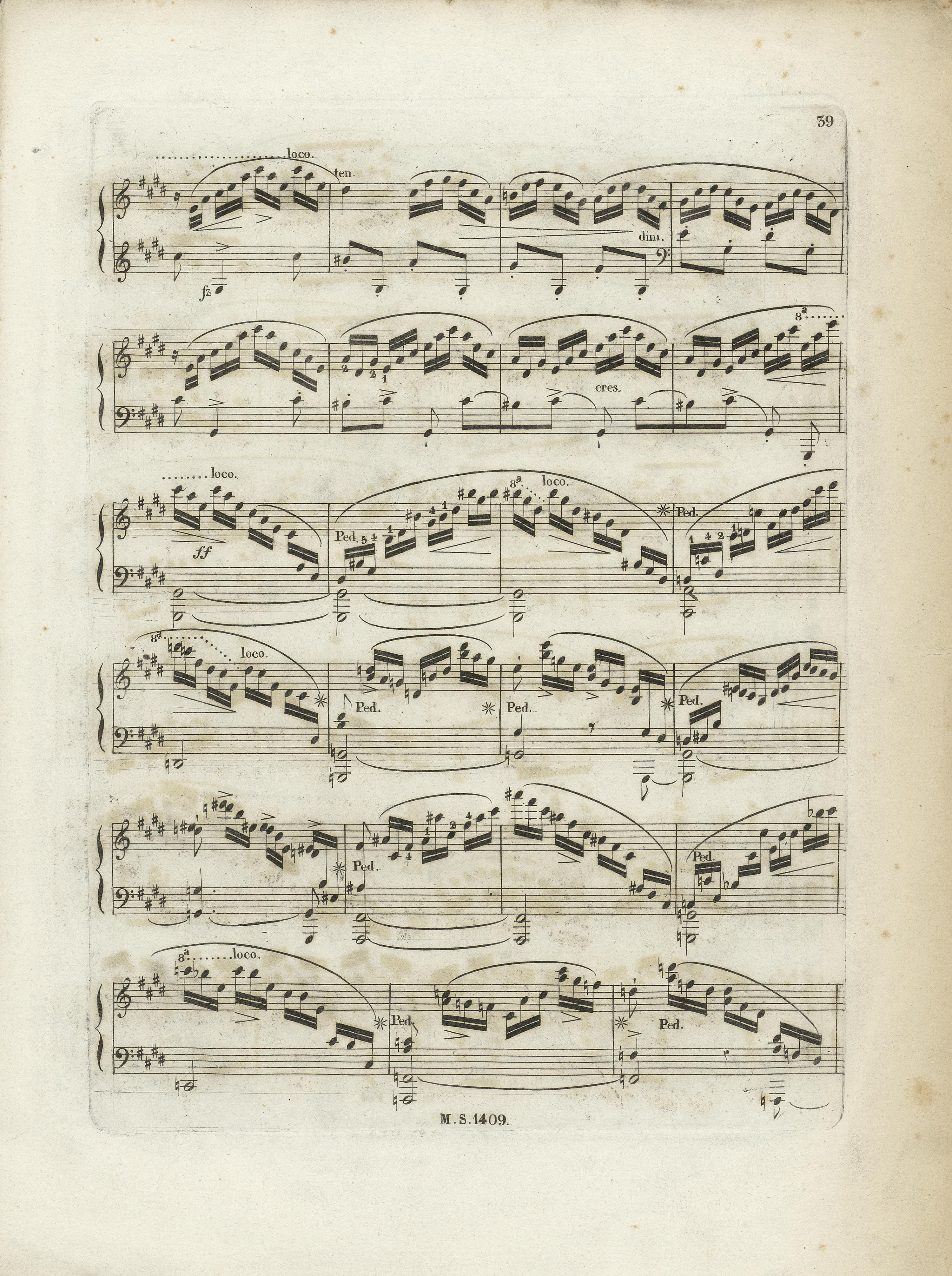



In bars 361 and 369, identical in terms of rhythm, the rests of FE are of different rhythmic value – there is a quaver rest in bar 361 and a crotchet one in bar 369. Both notations mean practically the same and both can be considered justified:
- the quaver rest results in a formally correct, although slightly artificial two-part notation;
- the crotchet rest provides for a less strict, yet more natural three-part notation.
It is difficult to determine whether it is a result of a mistake of the engraver or Chopin's hesitation. The notation was unified both in GE and EE, although differently in each edition. Each of those versions may correspond to Chopin's intention. However, since the performance manner is unquestionable, we preserve the differentiated notation of FE in the main text.
Compare the passage in the sources »
category imprint: Differences between sources
issues: EE revisions, Chopin's hesitations, GE revisions
notation: Rhythm




